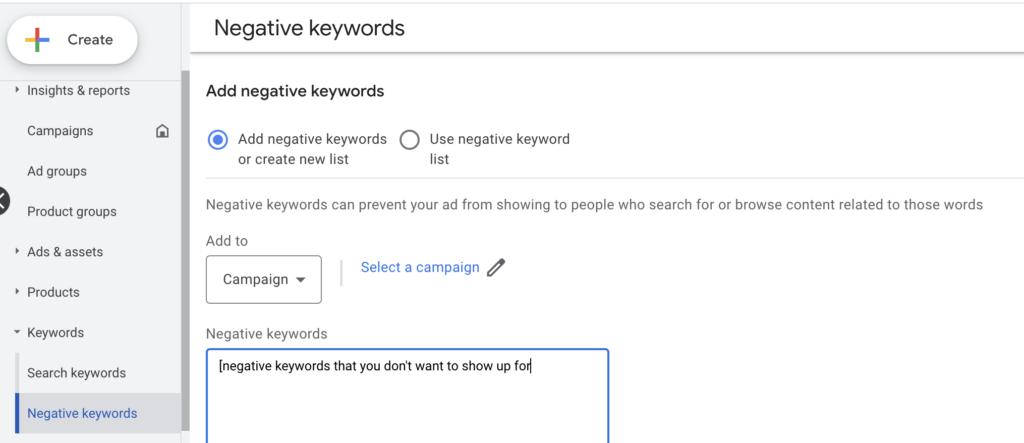Negative Keywords Aren't Negative. They're Positive!
Google Ads is a powerful platform for businesses seeking to drive traffic and sales through online advertising. However, the effectiveness of these campaigns hinges on targeting the right audience. One often overlooked aspect of campaign optimization is the use of negative keywords. Negative keywords are terms that you specify to exclude from your campaigns, ensuring your ads do not show for these searches. This can significantly improve campaign performance by focusing on more relevant audiences and managing budget more efficiently.

What Are Negative Keywords?
Benefits of Using Negative Keywords
1. Improved Click-Through Rate (CTR):
2. Reduced Wasted Ad Spend:
3. Increased Conversion Rates:
4. Increased Ad Relevance For Potential Clients:

How To Implement Negative Keywords Effectively?
1. Keyword Research:
2. Use The Search Terms Reports:
3. Consider Match Types:
4. Continuous Optimization:
A Quick Example Using Negative Keywords
Go Forth & Increase Your Negative (Keywords Of Course!)
The strategic use of negative keywords is a crucial element in optimizing Google Ads campaigns. By effectively implementing negative keywords, advertisers can improve the relevance and efficiency of their ads, ensuring better use of their advertising budget, improving click-through rates, and increasing overall conversion rates. Regular monitoring and adjustment of negative keywords as part of an overall PPC strategy are essential for maintaining optimal campaign performance.
Want A Robot To Compile Your Negative Keyword List?
Stay tuned for the next installment of our Google Ads series, where we delve deeper into the nuances of Google Ads and Merchant Center. Until then, happy optimizing!
If you need help with any aspect of your Digital Marketing including website design, Hosting or Maintenance, SEO, PPC, GA4 setup or AI implementation Book A Free Consultation With Us Today!